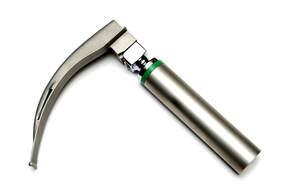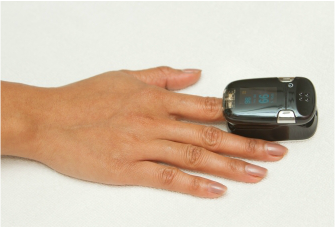
 Last week I had the opportunity to attend the 3rd North West Airway Meeting, hosted at the Manchester Royal Infirmary. As well as the chance to listen to some excellent speakers and catch up with people from across the region, I was also lucky enough to have been invited to talk a bit about NWRAG and our upcoming projects (as well as to present an interesting case that I had been involved in). With the focus of the day, rather unsurprisingly, being about all things airway, I hope that these notes highlight some of the interesting points.
0 Comments
 Probably one of the greatest benefits of being a trainee is the chance to rotate around different departments, different hospitals and work with different consultants. The variations in anaesthetic technique can be quite significant, and there always seems to be some aspect of it that I can take away for my own practice, either positive or negative. As such, I came to be working with a consultant I haven’t had chance to work with before and witnessed a fascinating piece of practice that I was amazed I had never seen before. Basically, every patient that got intubated had several sprays of lidocaine on their larynx at initial laryngoscopy. The impact on the extubation of these patients was quite remarkable. Instead of coughing, bucking, thrashing around and generally going bright red (not that all my extubations are like that), they opened their eyes, nodded in response to questions and were just generally very happy with this piece of plastic in their trachea (caution: case series was only an n of 2). To say I was impressed was a bit of an understatement. However, the questions quickly followed. The most obvious had to be; why doesn’t everyone do this? What’s the catch? What are the side effects and risks? It crossed my mind that this nicely numb larynx might not deal especially well with that chicken sandwich it comes across when back on the ward. My consultant hadn’t experienced any adverse events as a result of this (and used it frequently) and even described a few papers that had looked at this topic. Tempering my initial excitement with some scepticism I decided it would be worth a bit of research to see what the literature threw up. As such we have ended up with this post, looking at one particular paper on the subject. After a few pubmed searches, this paper in Anesthesia & Analgesia surfaced: Laryngotracheal Topicalization with Lidocaine Before Intubation Decreases the Incidence of Coughing on Emergence from General Anaesthesia. It seemed a suitable starting point to build on my ‘n of 2’ personal experience to see if there was evidence of a similar degree of efficacy. A double blinded RCT in a major paper seemed a great place to start with this, so let’s have a look at it.
 I remember in the early days of my anaesthetic training (not that long ago) when I first heard about the concept of apnoeic oxygenation. It was in fact our very own John Weeks that pointed me in the direction of NODESAT (Nasal Oxygenation During Efforts to Secure a Tube), and the paper by Drs Weingart and Levitan discussing approaches to reduce the incidence of desaturation occurring during intubation of critically ill patients (1). Preoxygenation/denitrogenation was one of the first things taught to us when we started to learn about rapid sequence induction of anaesthesia (RSI), giving that extra time to secure an airway before the tone of the sats probe started its precipitous decline, but this was the only real technique used to extend this time. But then I read this paper that describes how your can maintain oxygen saturations for (potentially) ridiculous lengths of time without the need to ventilate patients. Mind blown. Unfortunately, nothing really happened about it. I have still yet to see the techniques described used by other clinicians I was working with, and I was certainly a little too junior to start trying some maverick techniques. RSI was thio, sux, tube. As such, it was a rather pleasant surprise to spot this paper being mentioned on Twitter recently: Transnasal Humidified Rapid-Insufflation Ventilatory Exchange (THRIVE). Indeed it is a pretty prominent anaesthetic journal (in the form of Anaesthesia that) has published it: Transnasal Humidified Rapid-Insufflation Ventilatory Exchange (THRIVE): a physiological method of increasing apnoea time in patients with difficult airways Pre-hospital Emergency Medicine has been something I've been interested in for a while. There is a bit of info online from The Faculty of Pre-Hospital Care and the catchily titled Intercollegiate Board for Pre-Hospital Emergency Medicine. However, an article in Anaesthesia gives a nice summary of the development of the speciality, and is worth a look if you're that way inclined. (And it's free) Article: Anaesthesia and pre-hospital emergency medicine DOI: 10.1111/anae.12064 So what's it all about then?The journal calls it a review and I suppose it's sort of a non-systemic review but it does much more than that, as it covers the justification of the speciality, how it's developed and what training is involved. Trauma is relatively infrequent in the UK and tends to affect younger age groups. Even with the dense population, patients may still be relatively far from a suitably equipped hospital. There have been calls for some time for dedicated pre-hospital teams, but these have taken a long time to develop. Although paramedics + BASICS Dr make a good combination, coverage, availability and training may be variable. The idea is to start care at the highest level on-scene and continue throughout the patient's stay and rehabilitation. The current system commonly involves Enhanced Care Teams (ECTs, doctor + paramedic) which are generally funded by charities (with the exception of the EMRS in Scotland). This system has been formalised over the past few years. [The paper doesn't comment that there is still a lot of work & training done by groups such as BASICS] Current trainingPHEM was formally recognised in 2011 by the GMC and the first formal trainees started in 2012. It adds 12 months to a normal training programme, but in ideal circumstances the PHEM is 'blended' with the parent speciality over a longer period of time. It is estimated that about 250 whole-time equivalent (WTE) Consultants are required. Now, people aren't expect to work full time in PHEM so that translates to about 600-700 in total. The rest of the time would be spent in the parent speciality. This is quite a lot of jobs! Sounds great! What do I need to get in?They predict there will be about 25 training places per year. I'm not quite sure how this tallies with how many Consultants they think will be required. Applicants must be >=ST4 in either Anaesthetics or Emergency Medicine [since this was published they can now come from Intensive Care too]. What does training involve?A mix of hard and soft skills, taught in a variety of ways, from on-line to full high-fidelity simulations in the outdoors. No one speciality contains everything which needs to be known to practice PHEM. Just like in other parts of training, everyone's favourite Workplace Based Assessments (WBAs) make an appearance. There is no mention of the Dip IMC. I thought this was rapidsequence.com?This being an Anaesthetics journal, there is a specific section on Pre-Hospital Emergency Anaesthesia (PHEA). There has been some controversy about PHEA and if it is associated with poorer outcomes. Here they argue that in the right pair of hands (well trained, checklist, governance etc), it can be delivered safely. Ketamine is noted as the preferred induction agent over etomidate and there are some more references (42 - 45 in their text) for those who are concerned about increasing the intra-cranial pressure. They state: "recent evidence suggests that secondary brain injury is lessened, not only by the avoidance of systemic hypotension commonly seen with other induction agents, but also because ketamine attenuates the haemodynamic response to intubation and appears to also have neuroprotective properties" Interestingly suxamethonium is commonly used and even those using rocuronium don't routinely carry sugammadex (reversal is not really an option). Sedation is maintained with bolus midazolam & morphine or propafol infusions. The airway algorithm followed bears a lot of similarity to those used in hospital, following the order of DL/VL/LMA/FM/Surg. (Direct laryngoscopy, video laryngoscopy, laryngeal mask airway, face mask, surgical airway). They point out that the best results in PHEA are likely to occur in the context of a bundle of good care (lung protective ventilation, damage control resus etc etc) which seems sensible (although isn't referenced). Other bitsThere's some stuff on trauma networks and funding of PHEM, but that's probably of less relevance for budding trainees. Sum it upPHEM in one form or another has been developing for a long time in the UK but only relatively recently become a GMC-recognised speciality with its own training programme. Training jobs are open to post-fellowship SpRs and add about a year. Training itself is varied and PHEA (including pre-hospital rapid sequence, one of the really trendy bits) is one part of good clinical care.
Thanks for reading. By Tom Heaton  First described by Sellick in 1961, cricoid pressure was originally designed to make life difficult for smart-arsed junior anaesthetic trainees that were feeling rather pleased with themselves just because they had intubated half a dozen patients. It achieved this with a potent combination of impairing laryngeal view, resisting passage of an endotracheal tube and, crucially, also making manually ventilating the patient more challenging. ‘Sellick’s Triad’, born from this simple application of cricoid pressure, was able to successfully increase the number of trainee 'brown trouser' moments and a new trend in anaesthetic practice was born. Okay so I may have completely made this bit of history up, but this collection of complaints seems to be widely cited as being behind cricoid pressures descent from favour in recent times, especially with it’s partnering question of ‘Does it actually do anything?’ If you have been following some of the stuff at SMACC Gold through Twitter (or been lucky enough to actually attend) you might have heard some of the arguments around this increasingly controversial technique. |
The BlogA collection of our most recent posts on articles, guidelines and interesting thoughts. Archives
February 2022
Categories
All
|

 RSS Feed
RSS Feed
